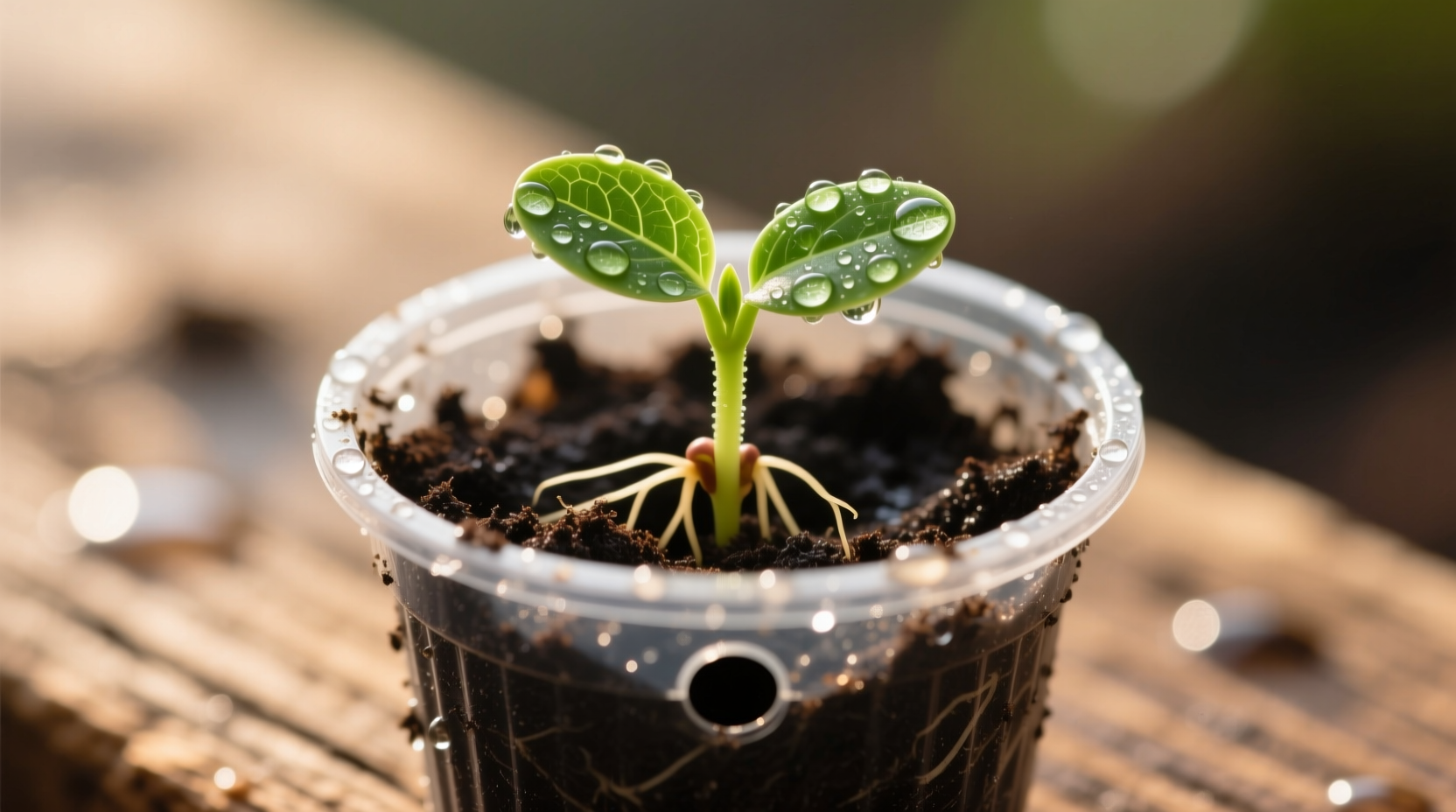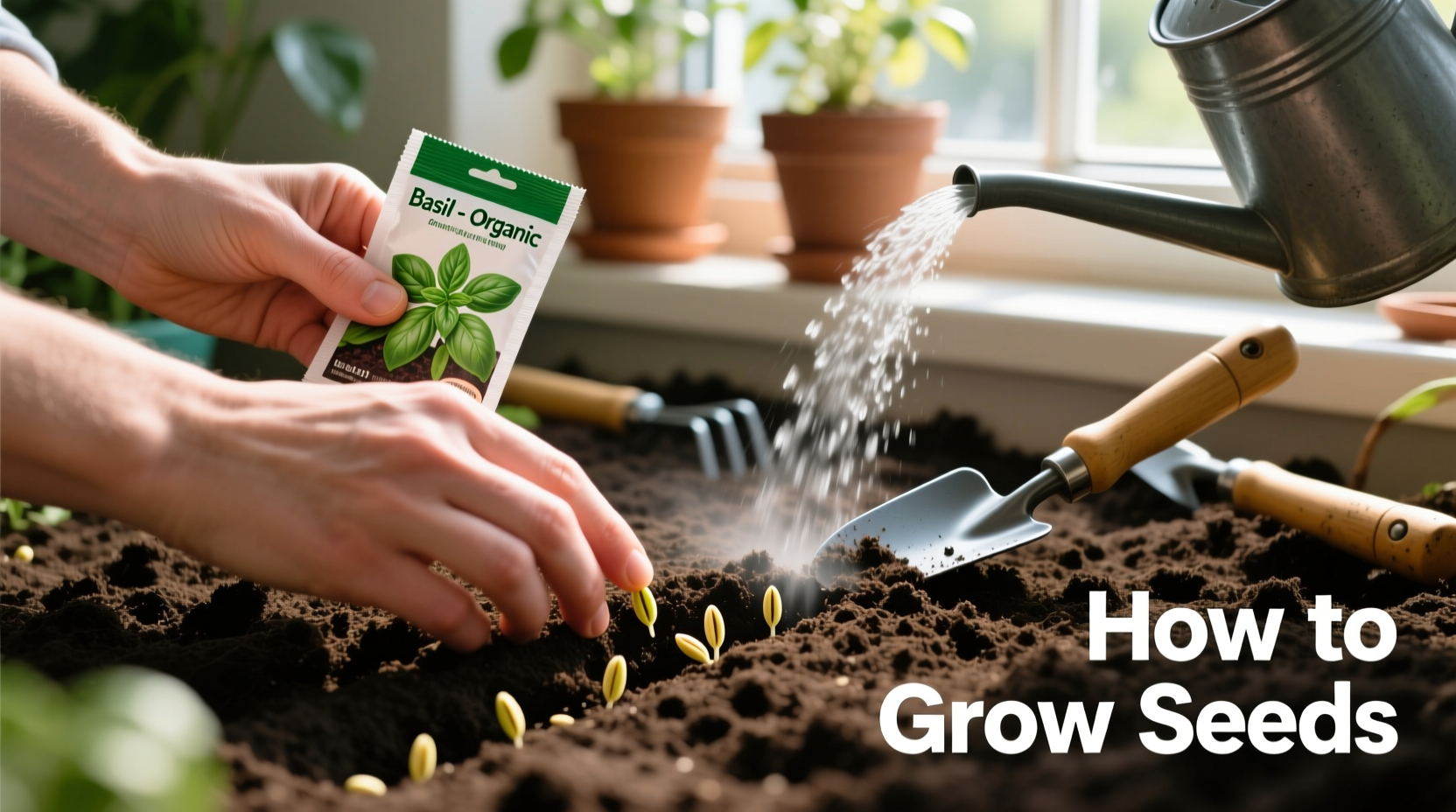Starting plants from seeds saves money, expands your gardening options, and connects you to the natural growing cycle. Whether you're cultivating vegetables, flowers, or herbs, proper seed growing techniques transform beginner gardeners into confident plant parents. This guide delivers actionable steps backed by horticultural research to ensure your seeds thrive from planting to harvest.
Understanding Seed Selection and Viability
Not all seeds perform equally. The USDA Agricultural Research Service confirms that seed viability decreases over time, with most vegetable seeds maintaining 70-90% germination rates when stored properly for 1-3 years. Before planting, check your seed packet for:
- Harvest year (fresher seeds generally germinate better)
- Germination rate percentage (aim for 80%+)
- Specific planting instructions for that variety
For older seeds, conduct a simple viability test: place 10 seeds between damp paper towels in a sealed bag. After 7-10 days, calculate germination percentage. If below 70%, consider purchasing fresh seeds or planting more densely.
| Common Vegetable | Optimal Germination Temp (°F) | Days to Sprout | Max Storage Years |
|---|---|---|---|
| Tomatoes | 70-80 | 5-12 | 4 |
| Carrots | 55-75 | 10-21 | 3 |
| Beans | 70-85 | 6-10 | 2 |
| Lettuce | 60-70 | 7-14 | 5 |
This comparative data from the USDA Agricultural Research Service shows critical temperature requirements affecting how to grow seeds successfully. Notice how cool-season crops like lettuce tolerate lower temperatures while warm-season plants like beans need consistent warmth.
Preparing for Planting Success
Your seed starting environment determines early success. University extension programs consistently identify three critical factors:
- Container selection: Use clean containers with drainage holes. Recycled cell packs or biodegradable pots work well for most how to start seeds indoors projects.
- Soil medium: Never use garden soil. Opt for sterile seed starting mix with excellent drainage. Cornell University's gardening program confirms that proper seed starting soil contains 50-70% perlite or vermiculite for optimal aeration.
- Timing: Consult your local frost dates. Most annuals need 6-8 weeks indoors before last frost. The National Gardening Association provides regional planting calendars based on 30 years of climate data.

Step-by-Step Planting Process
Follow these research-backed steps for how to plant seeds properly:
1. Moisten Soil Before Planting
Pre-moisten your seed starting mix until it feels like a damp sponge. Squeeze a handful - it should hold shape briefly then crumble. Dry soil repels water, making consistent moisture difficult to maintain.
2. Plant at Correct Depth
As a general rule, plant seeds at a depth of 2-3 times their width. Tiny seeds like lettuce need just surface contact, while larger beans require 1-1.5 inches of coverage. The Royal Horticultural Society's trials show improper planting depth causes 40% of seed starting failures.
3. Maintain Consistent Conditions
After planting, cover containers with plastic domes or wrap to retain moisture. Place in warm location (65-75°F minimum). Use heat mats for warmth-loving plants like peppers. Check daily for germination signs.
Nurturing Emerging Seedlings
Once sprouts appear, adjust your care routine immediately:
- Light requirements: Provide 14-16 hours of bright light daily. A south-facing window often isn't sufficient - supplemental LED grow lights placed 2-4 inches above plants prevent legginess.
- Watering technique: Bottom-water seedlings by placing containers in shallow trays. This encourages deeper root growth and prevents damping off disease.
- Thinning strategy: When first true leaves appear, remove weaker seedlings at soil level. Crowded plants compete for resources, producing spindly specimens.
Troubleshooting Common Seed Starting Problems
Even experienced gardeners encounter issues. Here's how to address frequent challenges when learning how to grow seeds:
Damping Off Disease
Symptoms: Seedlings collapse at soil line, often with white fungal growth. Prevention is key:
- Use sterile seed starting mix
- Avoid overwatering
- Provide excellent air circulation
- Sprinkle cinnamon on soil surface (natural fungicide)
Leggy Seedlings
Caused by insufficient light or excessive warmth. Solutions:
- Increase light intensity or duration
- Lower ambient temperature to 60-65°F after germination
- Plant leggy tomatoes deeper when transplanting
Transitioning to Outdoor Growth
The hardening-off process prepares seedlings for outdoor conditions. Start 7-10 days before transplanting:
- Day 1-2: Place seedlings in shaded, protected area for 1-2 hours
- Day 3-4: Increase exposure to 3-4 hours with morning sun
- Day 5-7: Extend to full daylight exposure
- Day 8-10: Leave seedlings outside overnight if temperatures allow
Monitor weather forecasts closely. The University of California Master Gardener Program emphasizes that skipping hardening off causes 60% higher transplant shock. Water seedlings thoroughly 1 hour before transplanting to reduce root disturbance.
Advanced Techniques for Better Results
Once you've mastered basic seed growing, try these professional methods:
- Seed priming: Soak seeds in aerated water for 4-12 hours before planting to accelerate germination
- Succession planting: Sow fast-maturing crops like lettuce every 2 weeks for continuous harvest
- Seed saving: Collect seeds from open-pollinated varieties for future planting seasons
Remember that regional climate variations significantly impact how to grow seeds successfully. Coastal gardeners may start earlier than mountain regions with similar latitude. The Old Farmer's Almanac provides customized planting schedules based on your specific zip code.
Frequently Asked Questions
How deep should I plant vegetable seeds?
Plant seeds at a depth of 2-3 times their width. Tiny seeds like lettuce need just surface contact with soil, while larger seeds like beans require 1-1.5 inches of coverage. Always check specific recommendations on your seed packet as requirements vary by plant type.
Why aren't my seeds germinating?
Common reasons include improper soil temperature, inconsistent moisture, planting too deep, or using old seeds. Check your seed packet for specific requirements. Most vegetable seeds need consistent moisture and warmth between 65-85°F. Conduct a germination test with 10 seeds on a damp paper towel to check viability.
How often should I water seedlings?
Water when the top 1/4 inch of soil feels dry. Seedlings typically need daily watering, but this depends on temperature and container size. Bottom watering is preferred - place containers in a tray of water for 15-20 minutes until soil surface darkens. Avoid overhead watering which can damage delicate seedlings.
When should I start seeds indoors?
Count backward from your last spring frost date. Most annual vegetables need 6-8 weeks of indoor growing before transplanting. Cool-season crops like broccoli can start 6-8 weeks before last frost, while warm-season plants like tomatoes need 8-10 weeks. Consult regional planting calendars for your specific area.
Can I use regular potting soil for starting seeds?
No, regular potting soil is too dense for delicate seed roots. Use a sterile seed starting mix containing perlite or vermiculite for proper drainage and aeration. Garden soil may contain pathogens that cause damping off disease. Quality seed starting mixes provide the ideal balance of moisture retention and air space for successful germination.











 浙公网安备
33010002000092号
浙公网安备
33010002000092号 浙B2-20120091-4
浙B2-20120091-4